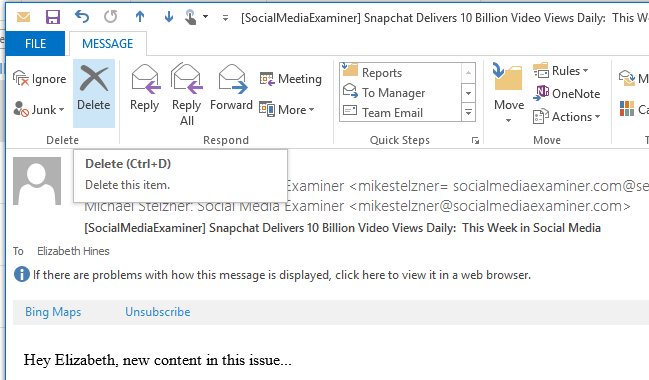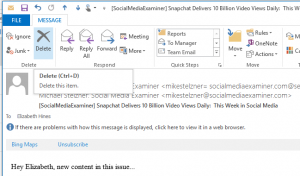
by Fronetics | May 4, 2016 | Blog, Content Marketing, Marketing, Strategy

Having a documented content marketing strategy increases effectiveness and provides a baseline for measuring ROI.
Content marketing is one of the most effective ways to increase brand awareness, broaden your customer base, and grow your business. Yet of the 88% of B2B marketers using content marketing, only 30% feel their efforts are successful. Why do so many organizations feel they are failing? Simply put, they do not have a documented content marketing strategy in place.
You would never operate your business without 1) creating a strategy, 2) documenting it, and 3) following the strategy. Nor should you launch a marketing program without having a clear idea of what you want to accomplish and how you plan to do that.
A content marketing strategy outlines the methods by which you will target, reach, and engage your audience. Research and execution of these tasks can be quite complex. Writing out a plan and assigning appropriate resources can offer clarity and guidance to your organization throughout the course of your program.
Also, remember that content marketing is more of a marathon than a sprint, and achieving results often takes months, even years. Documenting your strategy allows your team to keep focused on your goals and your plan for achieving them in the interim.
Here’s why you should take the time to draw up a plan and then write it down.
A documented content marketing strategy is more successful than an undocumented strategy or no strategy at all.
Research conducted by the Content Marketing Institute reveals that businesses that document their content marketing strategy find their efforts significantly more effective than those who don’t. Among B2B marketers surveyed:
- 60% of those with a documented strategy rate themselves highly, in terms of content marketing effectiveness.
- Only 32% of those with a verbal strategy rate themselves highly.
- Of those who rate their organization’s content marketing programs as not at all effective, a mere 13% have a documented strategy.
Further, organizations who meet regularly to check in on their content marketing strategy are much more likely to find it successful — 61% of the most effective marketers surveyed meet daily or weekly to review their progress.
A documented content marketing strategy helps measure ROI.
Many B2B businesses struggle with content marketing or have trouble garnering C-suite support for the program because return on investment is notoriously difficult to measure. In fact, more than half of marketers say one of their top challenges is measuring content effectiveness (57%) and/or measuring the ROI of their content marketing program (52%).
Having a documented strategy in place gives your organization measurable goals against which to compare your results. Your strategy should:
- Document what you hope to achieve through content marketing — more leads, higher conversion rates, more newsletter sign-ups, etc.
- Outline a specific methodology for executing those goals
- Assign human resources to each of the tasks
- Designate intervals at which to check in and evaluate/adjust your efforts
- Offer a time frame for completion
Documenting your strategy in such a way clarifies where you are investing time and resources so that calculating ROI is less of an abstract process.
Content Marketing Institute’s research confirms that content marketing success increases when there is organizational clarity about what success looks like, and that organizations with a documented content marketing strategy feel they are successful at tracking ROI. While only 21% of marketers feel they are successful at tracking ROI, that number rises to 35% when there is a documented strategy in place.
Related posts:


by Fronetics | May 3, 2016 | Blog, Content Marketing, Marketing, Strategy

These tips will help you optimize your marketing emails to improve open rates.
Are you spending time creating marketing emails that nobody opens?
Today, everyone’s inbox is inundated with social media notifications, contests and giveaways, and marketing emails from every company they have even considered buying from in the last five years. How do you make your message stand out enough to not get deleted — let alone, read?
First and foremost, you must look at first-impression factors like subject lines, overall design, organization and formatting, and even when you are sending your emails.
For example, you may imagine potential customers sitting at their desks first thing each morning and going through emails, but that is not necessarily the case. Email marketing company Constant Contact finds that optimal open times vary widely by industry. But, truth be told, the best time for your business to send emails will be unique to your business — and the best way to know when is to test.
Another important factor to consider is how your potential customers are reading email. A recent Experian study found that 56% of email opens occur on a mobile device. If you send a marketing email that is not optimized for mobile, more than half of your recipients are straining and struggling to read your content. You’ve given them a good reason to delete it instead of reading it.
With these things in mind, how do you create marketing emails that potential customers will actually open and read? Here are a few basics:
Optimize what the recipient first sees.
Your sender name should be easily identifiable as coming from you, as this will influence if your reader opens your message.
Convey your point in the subject line.
Your subject line is the first thing your readers see and a major determinant in whether the recipient will open your email or hit delete. It should be short (under 70 characters so it does not get cut off), catchy, and attention-grabbing, but also to-the-point. Recipients should understand what the email is about without even opening it, but the subject line should hook them into wanting to know more.
Create a sense of urgency.
Give customers a reason to act quickly, rather than let the email sit in their inbox. Craft this sense of urgency within your subject line with some form of time limit or “what-you-must-know-now” phrasing.
Avoid words that label your email as spam.
Always avoid using words like “Cash,” “Quote,” and “Save.” Filters are designed to move emails with these words into spam.
Make it personal.
If the recipient is someone with whom you have done business or a potential customer that has signed up for newsletters or promotions, make it personal. Including their name makes the email feel conversational and almost rude if they don’t open it and at least see what you have to say to them. Studies show that personalized email subject lines increase open rates across industries by as much as 40%.
Certainly, open rates are not the only measure of success when it comes to marketing emails. But, to achieve your goals, it is vital to optimize the number of people who actually read your marketing message. Simply put, you cannot reach your audience unless you garner their interest quickly and get them to open up your message.
Related posts:

by Fronetics | May 2, 2016 | Blog, Content Marketing, Marketing, Social Media, Strategy, Supply Chain

Image credit: startbloggingonline.com
Here are three of the top benefits of social media for businesses in the supply chain and logistics industries.
We know that the majority of businesses participate in social media — in fact, a dominant 88% of B2B marketers report using these platforms as part of their marketing programs. Large corporations, small businesses, and those in between are promoting their brand and engaging with customers online. Even companies within the logistics and supply chain industries are joining the bandwagon and reaping the benefits of social media marketing.
The truth is, if your company is not participating in social media, you are at a disadvantage. Your customers, your employees, and your competitors are taking advantage of these technologies to conduct business in new, more efficient ways.
Why are so many companies using these tools?
Here are just three of the top benefits of social media for business:
1) Communicate and engage
By participating in social media, your business has at its fingertips a highly efficient, sophisticated platform for engaging customers, employees, potential hires, industry peers, and the general public. You can announce a new product launch; share small or sweeping changes in service, supplies, practices, locations, etc.; respond to questions or complaints; weigh in on industry discussions happening on online forums; and celebrate employee milestones and accomplishments.
2) Generate and nurture leads
Social prospecting is the process of using social technologies to identify and pursue potential customers that may be interested in your company but that don’t yet know about it. Your business can prospect from the 2.3 billion worldwide social media users, engage them with relevant content, and form and build relationships that you otherwise would have never encountered were it not for the World Wide Web.
3) Reduce marketing expenses
It’s free to set up social media accounts for your business. The real cost comes with dedicating resources to maintain and monitor the content on each channel, and those needs will vary from business to business. Even if you do chose to upgrade and pay for premium benefits and services, like ads, the cost is significantly lower than using many traditional mediums. One recent study suggests that the cost per thousand impressions (CPM) could be as low as $2.50, while traditional tactics, like direct mail ($57 CPM) and TV ads ($28 CPM), remain significantly higher.
Learn more about social media for business in Fronetics’ new white paper, Social Media and the Logistics and Supply Chain Industries. The paper defines social media and social technologies, identifies users and usage patterns, and describes more benefits companies within the logistics and supply chain industries can realize through participation.

Related posts:

by Fronetics | Apr 27, 2016 | Blog, Content Marketing, Marketing, Social Media, Strategy

Fronetics’ social media training offers basic instructions on how you can help your company get invited, show up, and make a good impression with customers online.
What if you were told that a number of potential customers all visit the same place to chat and get to know businesses like yours before they choose to buy from them? Would you feel there was a strong reason for your business to have a presence there?
The answer is definitively, “Yes, absolutely!” Yet, some businesses are not establishing a social media presence — today’s ultimate social meeting establishment — which puts them in position of severe disadvantage.
Though you may be hesitant to participate, the various social media platforms are the place to meet, greet, and establish trusting relationships with your potential customers before they commit to a purchase. So, either show up, grab a drink, and chat, or surrender opportunities to your competition, who, by the way, is already “liked” by the masses.
How to Make an Entrance at the Social Media Party
Feeling a bit lost as to how to navigate social media? Don’t simply resign yourself to being the wallflower at this gathering. Make an entrance and get noticed!
Fronetics Strategic Advisors has created a social media training, specifically designed for business owners (B2B and B2C), marketers, and employees who are seeking a better grasp on social technologies. Consider it Social Media for Businesses 101: The training offers step-by-step instructions on using your individual social media presence to help boost your company’s social footprint.
No need to be shy. You know more, and can have a bigger impact, than you think. To be sure, the B2B sales process has evolved, but the basics remain: create conversation; educate the consumer; establish trust; and, eventually, generate a sales lead. But now you and your business can conduct this courting via digital platforms.
In this training, learn how social media is an opportunity for building brand awareness and allowing potential customers to get to know your business. See how you can make an impact on your company’s growth through Facebook, Twitter, and LinkedIn. And get a grasp on the fundamentals — as basic as how to “like” or “follow” your company — so that you feel more comfortable using social media in a professional context.
Social media is limitless opportunity for engagement and branding for your company. Participating across multiple platforms is an ideal way to expand brand awareness and establish your company as a thought leader in its industry. Don’t miss out on the party! Download Fronetics’ Social Media Training below so you can participate in the conversation happening online.
Get the free training
Related posts:
Fronetics Strategic Advisors welcomes your questions about social media, and can advise you on how to best leverage it to your company’s greatest advantage. Contact us for a free social media assessment.

by Fronetics | Apr 13, 2016 | Blog, Content Marketing, Marketing, Social Media, Strategy

You can help your company grow by using social media. Here’s how.
If your business is not utilizing the marketing power of social media, then you are at a severe disadvantage. In this digitally focused world, the fundamentals of marketing have evolved. Everyone, from business to consumer, is online, and you need a solid grasp on social media in order to position your company for growth.
Fronetics Strategic Advisors developed a training on social media, specifically designed for business owners, marketers, and employees who are seeking to expand their social media horizons. The training explains what social media can do for your business and describes the basics of each platform. What do each of these platforms do? What are the benefits of each? How can LinkedIn help your business?
Consider it Social Media for Business 101. Here is a sneak peek:
Why is being on social media so important?
Social media offers an opportunity to build brand awareness and establish your company as a leader within the industry. It is one way that potential customers or clients get to know you and see examples of your business knowledge. Dialogue about your business engages the public, makes them feel a connection to the business, and, if you do it correctly, builds a level of trust between your audience and your company.
What, exactly, can I do with it?
- Engage with/share your company’s content across your social networks
- Invite others within the industry to “like” and “follow” your company on all social channels
- Engage in conversations online and share feedback
- Subscribe to your company’s blog
- Invite others within the industry to subscribe to the blog
- Forward relevant blog content as appropriate
- Optimize your social media profile
How do I begin?
On Twitter
From your Twitter homepage, search for your company using the search bar in the upper-right corner of the page. This will take you to the company’s Twitter feed. Start by “following” the company. After this, you’ll be able to interact by retweeting and favoriting tweets. Retweeting will display a post to your followers. You’ll have the option to add your own comment before the retweet.
On Facebook
From your Facebook homepage, search for your company using the search bar in the upper-left corner of the page. This will take you to the company’s Facebook page. From here, you can “like” your company by selecting the thumbs up “Like” button in the bottom-right corner of the cover photo. As you scroll down the page, you’ll find posts that have been shared by your company. You can “like” and/or “share” each individual post. When you share a post, it is displayed on your profile page and will show up in your friends’ news feeds.
On LinkedIn
From your LinkedIn homepage, search for your company using the search bar at the top of the page. This will take you to the company’s page. “Follow” your company to start receiving the company’s posts and updates in your news feed. From your newsfeed you can “like,” “share,” and “comment” on posts. Use Groups to help connect and engage with potential prospects and industry peers. Find LinkedIn groups by selecting “Groups” from the dropdown box under the main category “Interests.” Get recommendations and discover new LinkedIn groups by using the “Discover” feature. Join a group by requesting membership.
Social media is an opportunity for engagement. Participating across multiple platforms is an ideal way to build brand awareness and establish your company as a thought-leader in its industry. To learn more, download the Fronetics Social Media Training below.
Download training
Related posts:

by Fronetics | Apr 12, 2016 | Blog, Content Marketing, Marketing, Strategy
Content drives business growth, builds customer loyalty, and helps nurture leads.
One of the best ways to market your business today is to plant the seeds that will generate new customers tomorrow. Enter, content marketing: a long-term solution that helps businesses build brand awareness, grow their audience, and generate new leads and sales.
Most companies, more than 85% of them, realize that content marketing is a vital component to cultivating growth. But, according to the Content Marketing Institute, less than half of those who use it believe they do it well.
It may be particularly difficult for smaller businesses to justify allocating precious time and resources to a strategy that they are not sure is being executed properly. How can they compete against industry giants that have name recognition and massive budgets working for them already?
Medium-sized to smaller companies need to establish a relationship with their potential customers or clients and drive brand awareness, accomplishing this goal with far less resources. And content is the way a company makes that all-important connection.
With quality content, you become a source of knowledge and advice. Most importantly, it reaches potential customers where they most often look for new information: online. Whether a blog, white paper, webinar, video, or social post, you are creating brand awareness and building trust by distributing content. Establishing your company as a reliable source of knowledge is what makes a customer eventually choose to do business with you.
Content Works Overtime
Through your content strategies, you have an endless opportunity to provide potential customers with information about your business, your services, products, tips, or simply advice. The best part is as long as it is good, quality content, on topics that speak to potential customers’ needs and questions, it will continue to generate sales leads.
According to the Harvard Business Review article on the subject, “In both B2B and B2C businesses, customers are doing their own research both online and with their colleagues and friends. Prospects are walking themselves through the funnel (where they gain knowledge for buying decisions), then walking in the door ready to buy.”
Coined by McKinsey, the metaphor of a “funnel” describes where consumers start with a number of potential brands in mind then methodically narrow down their choices. At the end, they emerge with the one brand they chose to purchase from. With social media and digital marketing, content is now a huge factor in the “customer decision journey”.
Will Content Work for Me?
A successful content marketing allows your business to reach more and more potential new customers each week. However, there are some requirements for content to properly do its job.
- Content needs to be consistent (frequent, fresh posts)
- Content must be engaging (taps into what people really want/need to know)
- Content must be good quality (entertains and informs: potential customers should learn something from it and walk away feeling that your company knows what it is talking about)
According to Inc. magazine, it is best to take a holistic approach to your content marketing plan. First you must write down your strategy and be able to tie your overall business goals and objectives into your content calendar.
This is your path and serves as an ongoing content guide. Statistically, only 11% of companies without a documented content marketing strategy find their efforts to be successful, versus 60% of companies with a strategy in place. Designate someone to lead your strategy, and success rises to 86%. In fact, according to a survey by the Content Marketing Institute, the majority of the most effective B2B marketers (86%) have a designated person overseeing their content marketing strategy; versus the 46% of less-effective marketers who do not.
Also remember, content marketing’s main objective is lead nurturing, not producing instant results. You will slowly develop a loyal following of readers and content consumers who continue to return to you for knowledge and, ultimately, your product or services.
Related articles:









